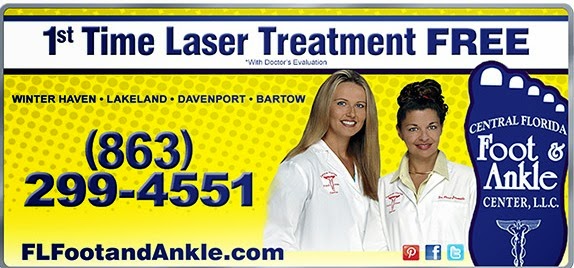.png) Within every profession, there are descriptive terms to specify characteristics or locations of features on an item. For a botanist, the anatomy of a plant is crucial in determining how a plant functions and plays an important role in how it reacts to its environment. For the musician, each instrument has their own sound and frequency as dictated by its anatomy – all the parts work together! For many healthcare professionals and patients, it makes sense that the human body has its own anatomy – there’s a name for every bone, joint, ligament, tendon, organ and blood vessel. And even those structures have structures on or within them that are named or classified. Each area of study has its own focus and that focus is very detailed.
Within every profession, there are descriptive terms to specify characteristics or locations of features on an item. For a botanist, the anatomy of a plant is crucial in determining how a plant functions and plays an important role in how it reacts to its environment. For the musician, each instrument has their own sound and frequency as dictated by its anatomy – all the parts work together! For many healthcare professionals and patients, it makes sense that the human body has its own anatomy – there’s a name for every bone, joint, ligament, tendon, organ and blood vessel. And even those structures have structures on or within them that are named or classified. Each area of study has its own focus and that focus is very detailed.In regards to biomechanics of the foot, a podiatrist must be knowledgeable of all the structures and the geography within the foot. In addition, the anatomy of footwear is also important to know. It helps the clinician evaluate the footwear and deem it worthy or unworthy of your feet. Below is a list of the structures in a typical tennis shoe. Shoe designers and shoe manufacturers must also have an expert handling of shoe terms because they work with its creation on a day-to-day basis.
For a shoe to work, all the components must be secure, comfortable and work together in harmony. Different shoes have different functions or combinations of functions: arch support, shock absorption, balance, traction and ambulation. In addition, athletic shoes designed specifically for a sport all have properties that help the activist excel in that sport.
Below is a basic diagram of a typical athletic shoe with various parts labeled. Descriptors of the terms will follow in the next article. With a little time, you too can be familiar with all the components of a tennis shoe and their functions! Who knew that even tennis shoes had such a specific anatomy!?
All the different components of an athletic shoes work together to keep the foot protected, balanced, and optimize its performance. Athletic shoes of various sports have variations of the characteristics listed above to enhance performance of the foot.
Refer back to the diagram in the previous article to help you learn the terms and their functions in regards to their placement on the shoe!
Upper – the entire portion of the shoe that covers the foot
Sole – the entire portion of the shoe that the foot rests upon
Shoe upper + shoe sole = entire shoe
Toe box – the horizontal and vertical space near the tip of the shoe to accommodate the toes, comes in different shapes
Vamp – the upper, middle section of the shoe were the laces are located – Velcro fasteners may also be found in the vamp section
Laces – one of the common closure types of shoes (Velcro is another one) – the purpose of laces is to anchor the shoe firmly onto the middle portion of your foot
Eyelets – a round cutout in the vamp section of the shoe to allow the passage of laces, the resistant material that encircles the eyelet is called the eyestay
Tongue – a thick flap of material that sits underneath the laces to protect the top of the foot from pressure of the laces
Top line – the top edge of the upper portion of the shoe
Achilles notch – always found at the back of the shoe, this notch keeps the Achilles tendon from encounter irritation from the shoe
Heel counter – stiff material employed to reinforce the shape of the back portion of the shoe, helps with shoe fit and shoe stability
Outsole – the outsole is the portion of the shoe that directly contacts the ground
Quarter – the portion of the shoe that covers the heel and connects it to the vamp
Athletic shoes in different sports have modifications of the characteristics listed above to help enhance the wearer’s performance and to protect the wearer’s feet. For example, basketball shoes have a much higher topline (hi-top shoes) to help keep the ankle in place and reduce the incidence of ankle sprains. Soccer and football cleats have large studs on the bottom of the sole (connected to the outsole) to provide traction on the playing surface. So next time you’re in a shoe store with a friend, impress them with your knowledge on shoes!
Winter Haven, FL 33881
Phone: 863-299-4551
http://www.FLFootandAnkle.com


No comments:
Post a Comment